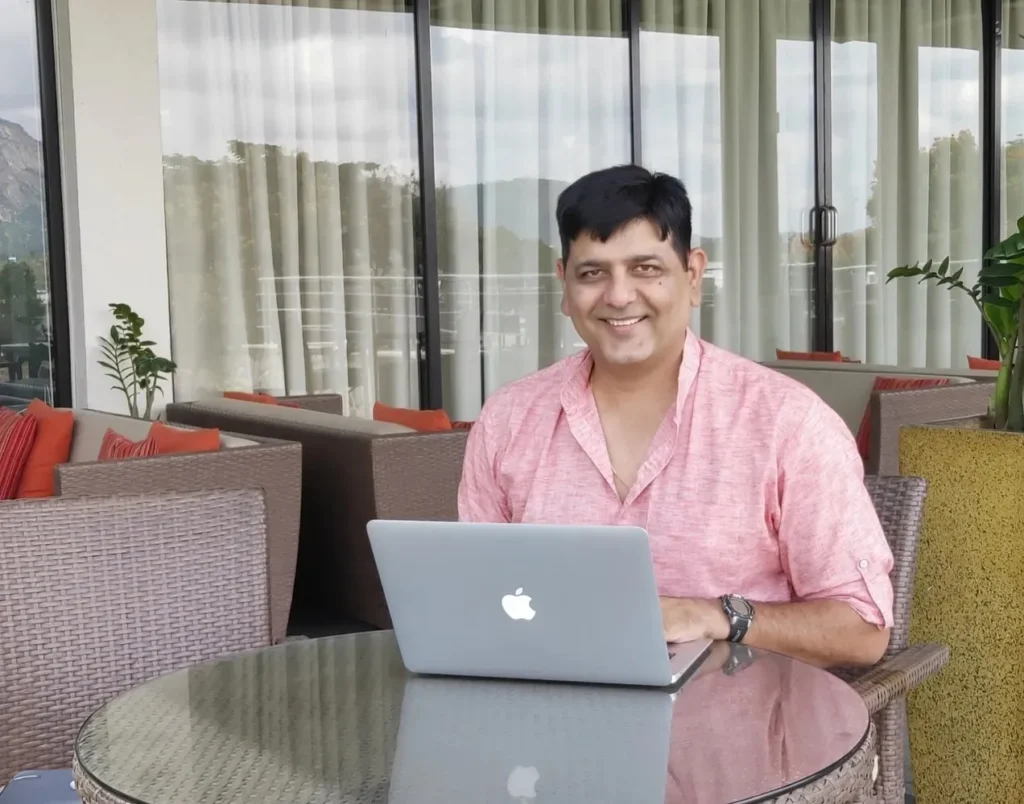Emotional Intelligence (EI) has joined IQ as one mark of a well-rounded leader. While there are many measures and conceptualizations of emotional intelligence (EI as behaviour , cognitive ability, part of one’s personality, or self competence), there are some concepts that appear frequently. These are self-awareness, self-regulation, empathy, and social skills.
EI has been associated with transformational leadership capacities such as inspiration, motivation, and vision. Studies suggest that higher levels of EI are associated with higher ratings of leader performance by followers as well as with organizational effectiveness.
While the “what” and the “why” of emotional intelligence have been fairly well established, the “how” has generally been neglected. This article offers a framework for how one might develop emotional intelligence through the characteristic that I call Emotional Dynamism.
Emotional Dynamism is the extent to which one can access a full range of emotions, modulate the intensity of any one emotion, move through emotional states smoothly and quickly, and integrate one’s emotional state with what one is thinking, one’s physical state, and one’s creative capacity. Emotional Dynamism has four dimensions : emotional range, emotional intensity, emotional fluidity, and emotional integration.
Emotional Dynamism is a precursor to the extraordinary benefits of emotions and the development of emotional intelligence. In this article I present each element of Emotional Dynamism that has an important implications for leadership and some questions for self-assessments as well as suggestions for developing additional capacity in each area.
Emotional Range
If we consider the keys of the piano or strings of a guitar as a metaphor, range is the use of all the notes-high and low, major and minor-in our composition and playing. Those of us who have taken guitar or piano lessons know that we learned the simple songs first, ones composed of notes occurring within one octave. As we grow in our ability, our compositions encompassed a greater variety and scope of the strings / keyboard’s range of notes.
Some of us have an impoverished understanding of the range of human emotions. We understand mad, sad, and happy and are perhaps only able to report and feel comfortable with those basic emotions. This range of emotions is analogous to playing only Chopsticks. However, as our emotional sophistication grows, we can cover a wider range. The emotionally dynamic leader can access hundreds of emotions beyond the six primary emotions of happiness, sadness, fear, anger, surprise and disgust.
Range of Leadership Emotions
Emotional range is the ability to discern a wide range of emotions in both oneself and others and to be intentional about the expression of those emotions. By accessing our full range of emotions, we obtain valuable information about ourselves and the world in which we operate.
Compassion and empathy require that we identify with the emotions of others. If we are uncomfortable with particular emotions, we tend to avoid or deny them in ourselves, thus denying access to important information about the particular set of events, circumstances, or people that gave rise to those emotions. In addition, we cannot identify with or may seek to avoid emotions in others that we are not comfortable acknowledging within ourselves.
It is difficult to be compassionate or have empathy if we cannot “see” certain emotions. Recently, a group of managers from a large company participating in a leadership development program viewed pictures of people expressing different emotions. The managers who were uncomfortable with particular emotions were unable to see the faces of individuals expressing those emotions.
Questions for Self-Assessment
- Which emotions are easiest for me to accept in myself and others? Make a list.
- When have I received feedback about my empathy or lack thereof?
- What needs do I have that are being fulfilled or frustrated?
- How do those needs relate to my emotional range?
Developing Emotional Range
One of the frequent reasons for lack of emotional range is that we are consciously or unconsciously avoiding particular emotions. Therefore, a development activity would be to understand the basis for your avoidance. Are there situations in which you experienced an undesirable outcome when you expressed a particular emotion? Do any of the cultures that influence you (national, gender, family, professional) have sanctions against expressing particular emotions?
Another avenue of development is to explore and evoke unfamiliar emotions. We can train ourselves to recognize subtle emotions by viewing photographs and matching facial expressions with emotional states. Our own emotional state is impacted by our facial expression. Try making different facial expressions and note the differences that occur in your emotional state.
Emotional Intensity
Emotional Intensity is our capacity to turn a particular emotion “up” or “down” and the degree to which our emotional response appropriately matches a situation. Think of the importance of modulating volume in a piece of music. Just as the great composers used intensity to communicate different musical intentions, our emotional intensity lets others know what is going on inside of us.
Perhaps you have worked with someone who is either “on” or “off” or goes from mild irritation to extreme anger without any warning. Such rapid transformations can be quite disconcerting for followers. Leaders lacking the ability to modulate their emotional intensity may be unpredictable and, therefore, difficult to trust.
If your volume is always low but someone else has an expanded capacity in the area of emotional intensity, you may mistake their moderate expression for a more extreme statement. The result may be miscommunication. Your sensitivity in accurately interpreting the emotional expression of others and the degree to which you respond to a situation with an appropriate level of emotional intensity is a sign of emotional stability that engenders confidence in those you lead.
Questions for Self-Assessment
- Do I have a habitual level of emotional intensity? Am I always “on” or always “off”?
- How long does it take before I recognize that I am in a particular emotional state?
- Are people sometimes surprised by my emotional expression/s?
Developing Emotional Intensity
A restriction in your emotional intensity may be due to your failure to “register” internal emotional states or your reluctance to be emotionally expressive in particular situations. In some cases expressing emotions is appropriate; in other situations we are unduly restricted or delayed in our emotional expressions. Keep a log of your emotional reactions to situations. Notice when you are blocking emotions and when emotions erupt without warning.
Make a conscious choice about what to do when you recognize an emotional state in others or in yourself. With practice, develop the ability to monitor your emotional state and to match your expressions to each situation. Seek feedback from trusted others about how they experience your emotional intensity.
Emotional Fluidity
The ability to move between emotional states as called for by a situation without getting “stuck” or fleeing too rapidly is termed Emotional Fluidity. Using the piano or guitarist example, a fluid player is one who is limber and can play either rapidly or at a leisurely pace-whatever is called for by the score. Such a player would not get “stuck” playing a particular set of notes or a passage in a concerto.
In an emotional situation, those with emotional fluidity can get beyond the emotion of a given moment. In contrast, others will seem fixated or stuck in an emotion, perhaps seeming sluggish in their ability to respond appropriately and quickly. This may be more likely to occur with negative emotions or with emotions that are unresolved. A particular emotional state may be a familiar and comfortable place to be. However, according to Barbara Fredrickson’s work on positive emotions and management, – being “stuck” narrows one’s decision-making capability. Frustration can also arise in self or others over how long you (or others) stay in this state before trying to move on.
The implications for developing emotional fluidity are many. As you give yourself wider decision-making space, you will be able to flow with the situation or even change the dynamics of the situation. Lack of fluidity tends to dilute the ability to experience other things in one’s surroundings. For example, a leader who is stuck in the frustration of a failed project may fail to generate enough enthusiasm to motivate his/her followers to pursue a new opportunity. Such is the effect of “tunnel vision,” that is, when one does not see the options that are available. Others can also become frustrated with a leader who is “stuck,” even if the emotion is a positive one such as hope or optimism. If the situation calls for a somber response, an overly positive reaction from a leader may be viewed as out of touch and emotionally disconnected.
Questions for Self-Assessment
- When was the last time that you had difficulty letting go of an emotional state? What was happening; who was involved? Is this a pattern? What were the results of these situations?
- When have you been able to move to another emotional state? What was happening, who was involved? Is there any pattern?
- Contrast your answers to the two questions above. Can you learn anything about your patterns?
Developing Emotional Fluidity
Practice moving off of a particular emotional note such as happiness, anger or frustration-whichever makes you feel most comfortable. Notice how long you stay in a particular state. Ask yourself, “Why am I feeling this emotion?” “What is the trigger for this emotion?” or “Is this emotion coloring my experience?”
When you find yourself with limited options, take note of your emotional state and consciously filter it through mental review, self dialogue, or the stimulation of pictures or music. Now think of alternative options for resolving this issue.
Emotional Integration
Emotional Integration is our ability to understand how our emotions are interconnected with our thoughts, our physical well-being, and our creative expression. Leaders who miss the opportunity to see how their emotions impact their thoughts, sensations, and creativity are operating at less than full capacity. Rational thought and emotion are inextricably linked. In fact, when brain trauma injures one’s center of emotions, individuals are rendered incapable of making even the simplest decisions.
Similarly, how we think about a situation impacts our emotional state. We have the capacity to create emotions from thoughts. Simply considering the range of emotions that one can experience during the day suggests that the emotions we select for attention are likely to grow.
Our language also reflects the notion that our emotions are strongly connected to our body and to physical sensations: “I have butterflies in my stomach.” “She is a pain in the neck.” “I feel the weight of the world on my shoulders.” “I feel light as a feather.” Such common expressions connect emotional states such as anxiety, frustration, dread, and being carefree with physical sensations. Many of us experience our emotions through our physical sensations before we become conscious of them at the intellectual level. Similarly, our emotional state impacts our physical well-being and our ability to recover from traumatic events and illness.
Creativity
Creativity depends on our ability to make novel connections, solve unusual problems, and see beyond ordinary circumstances. While creative performance has been clearly associated with positive effect, new research suggests that a full range of emotions is important for innovation.
Recent studies revealed that ambivalent feelings such as simultaneously experiencing excitement and anxiety were associated with increased ability to make novel connections, thereby suggesting that emotional range may be associated with creativity. Negative emotions tend to limit one’s ability to see options. Thus, being stuck in the negative zone may limit a leader’s ability to make sound decisions and to formulate strategic responses to novel and challenging situations.
Questions for Self-Assessment
- What is my body’s emotional signaling system? Can I learn to use it to develop different aspects of Emotional Dynamism? Will it tell me when I am experiencing a particular emotion or when I am stuck in a pattern of response?
- How do I incorporate my emotions-my “gut”-into my decision-making process? Is my lack of emotional fluidity keeping me from seeing opportunities or dealing with challenges
- Am I aware of the flow/creative state? When is it easy for me to enter the state? What emotions keep me from entering the flow?
Developing Emotional Integration and Creativity
Developing Emotional Integration requires that the leader understand his or her patterns of emotional response. Each of us has a set of beliefs about the world that informs our reactions. Do you understand your set of beliefs? How connected are you to your physical sensations?
Take a self reflection class that helps you become more attuned to your whole self. Develop a memory bank for understanding what is happening with you physically and how it relates to your emotional state. Use your strong emotional reactions as a signal to “check-in” with what is happening around you. If you are having a strong reaction, ask yourself what is happening. Is it a trigger from your past, or a source of information for improved learning.
Leaders who are emotionally integrated with the environment can see patterns in their emotional responses, are sensitive to how they respond physically to emotions, and use emotional information to inform their cognition for self development.
Conclusion
The complexity and challenges of our times call for leaders to develop all of their capabilities. Emotions often seem to be a mysterious aspect of what it means to be human. My intent has been to create a framework so that the “mystery” is replaced with an understanding of how to identify and develop one’s emotional capacity. I believe that leaders who develop Emotional Dynamism will be able to leverage the power of their emotions. Like a master pianist or guitarist who captures the power and majesty of a composition, an emotionally dynamic leader brings forth the “music” of the organization in all its complexity and inspires others to achieve their own potential as they contribute to the organization.
If you enjoy reading such article on ‘Mindful Productivity & Cerebral Happiness’ then consider subscribing my E-Mail Newsletter “SUNDAY RETAZOS” which is sent exclusively to my subscribers with weekly updates on Mindful Productivity, life lessons and interesting articles, I discover during the Week.
Also follow the ‘JOE’s Life Skills Lab‘ and get yourself enrolled in my E-Mail Newsletter “SUNDAY RETAZOS” sent exclusively to my subscribers with weekly updates on Mindful Productivity, life lessons and interesting articles, I discover during the Week. I AM SURE YOU DO NOT LIKE TO MISS OUT ON THIS ( 👈 Tap on an Embedded Link Here )
Get in touch… — JOE’s LIFE SKILLS LAB/Joe Sehrawat
Joe



